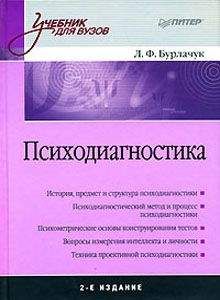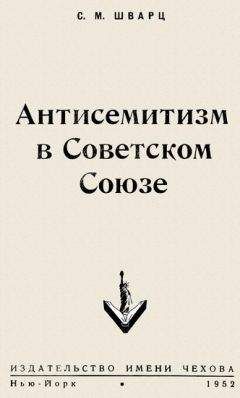Dawes, R. M. (1994). House of cards: Psychology and psychotherapy built on myth. New York: Free Press.
Denney, N.W., Palmer, A.M. (1981). Adult age differences on traditional and practical problem-solving measures. Journal of Gerontology, 36, 323–328.
Detterman, D. K. (1993). Giftedness and intelligence: One and the same? In G. R. Bock amp; K. Ackrill (Eds.), The origins and development of high ability. Chichester, England:
Wiley.
Detterman, D. K. (1994). Intelligence and the brain. In P. A. Vernon (Ed.), The neuropsychology of individual differences (p. 35–57). New York: Academic Press.
DuBois, P. H. (1966). A test-dominated society: China 1115 B.C. – 1905 A.D. In A. Ana-stasi (Ed.) Testing problems in perspective, (p 29–36). Washington, DC: American Council on Education.
Duncan O. D., Featherman D. L, Duncan B. (1972). Socioeconomic background and achievement. New York: Seminar Press.
Eagly, A. H., amp; Chaiken, S. (1992). Thepsychology of attitudes. San Diego, CA: Harcourt Brace Janovich.
Ebel, R. L. (1972). Essentials of educational measurement. Englewood Cliffs, NJ: Prentice-Hall.
Edwards, A.J. (1971). Individual Mental Testing. Part I History and theories. Scranton, PA: Intext Educational Publishers.
Edwards, A. L. (1957). Techniques of attitude scale construction. New York: Appleton-Century-Crofts.
Edwards, A. L. (1957). The social desirability variable in personality assessment and research. New York: Dryden.
Edwards, A. L. (1970). The measurement of personality traits by scales and inventories. New York: Holt, Rinehart, amp; Winston, Inc.
Eldelberg L. (ed.) (1968). Encyclopedia of psychoanalysis. New York: Free Press.
Elliott, С. D. (1990a). Differential Ability Scales: Introductory and Technical Handbook. San Antonio, TX: Psychological Corporation.
Elwood, D. L., amp; Griffin, R. H. (1972). Individual intelligence testing without the examiner: Reliability of an automated method./owraa/ of Consulting and Clinical Psychology, 38, 9-14.
Encyclopedia of Psychological Assessment (2003). Ed. by R. Fernandez-Ballesteros. Vol. 1, 2. London: SAGE Publications.
Ethical Conflicts in Psychology (2003). Ed. by D. N. Bersoff. Washington: АРА.
Ethical Principles of Psychologists and Code of Conduct (2002). Washington: АРА.
Exner, J. E. (1986). The Rorschach: A comprehensive system (Vol. 1). New York: Wiley.
Exner,J. E.,Jr. (1993). The Rorschach: A comprehensive system. Volume 1 : Basic Foundations (3rd ed.). New York: Wiley.
Eysenck H.J. (1979). The structure and measurement of intelligence. Berlin: Springer-Verlag.
Eysenck H.J. Comments psychosis and psychoticism: A reply to Bishop./. Abnorm. Psychol., 86, № 4, 427–430.
Eysenck H.J. Personality and factor analysis: A reply to Guilrofd. Psychological Bulletin, 84, № 3, 405–411.
Eysenck, H. J. (1971). The IQ argument: Race, intelligence and education. New York:
Library Press.
Eysenck H.J., Eysenck S. B. G. (1975a). Manual of the Eysenck personality questionnaire. London: Hodder and Stoughton.
Eysenck, H.J., amp; Eysenck, S. B. G. (1975b). The Eysenck Personality Questionnaire Manual. London: Hodder amp; Stoughton.
Eysenck H. J., Eysenck S. B. G. (1977). Comments block and psychoticism./. Abnorm. Psychol, 86, № 6, 651–652.
Eysenck H. J., Eysenck S. B. G. (1976). Psychoticism as a dimension of personality. London: Hodder and Stoughton.
Eysenck, H. J., amp; Eysenck, S. B. G. (Eds.). (1991). Improvement of IQand behaviour as a function of dietary supplementation. Personality and Individual Differences, 12, 329-65.
Fancher, R. E. (1985). The intelligence men: Makers of the IQ, controversy. New York:
W. W. Norton amp; Co.
Farber, S. L. (1981). Identical twins reared apart: A reanalysis. New York: Basic books.
Finegan, J. E., amp; Alien, N.J. (1994). Computerized and written questionnaires: are they equivalent? Computers in Human Behavior, 10, 483–496.
Fiske D. W. (1971). Measuring the concepts of personality. Chicago: Aldine Publ. Co.
Fletcher, R. (1991). Science, ideology andthe media: The Cyril Burt scandal. New Brunswick, NJ: Transaction Books.
Flynn J. R. (1984). The mean IQ of Americans: Massive gains 1932 to 1978. Psychological Bulletin, 95, № 1, 29–51.
Flynn J. R. (1987). Massive IQ, gains in 14 nations: What IQ tests really measure? Psychological Bulletin, 101, № 2, 171–191.
Flynn, J. (1999). The discovery of IQ gains over time. American Psychologist, 54, № 1, 5-20.
Frank, G. (1983). The Wechsler Enterprise. Oxford: Pergamon Press.
Fulker, D. W. (1975). [Review of «The science and politics of IQ.»] American Journal of Psychology, 88, 505-37.
Gardner, H. (1983). Frames of mind: The theory of multiple intelligences. New York: Basic Books.
Gardner, H. (1993). Multiple intelligences: The theory in practice. New York: Basic Books.
Goddard, H. H. (1913). The Binet tests in relation to immigration. Journal of Psycho-Asthenics, 18, 105–107.
Goddard, H. H. (1917). Mental tests and the immigrant./омпга/ of Delinquency, 2,243–277.
Goldberg L. R. (1963). Model of item ambiguity in personality assessment. Educ. and Psychol. Measurement, 23, 467–500.
Goldberg, L. R. (1971). A historical survey of personality scales and inventories. In P. McReynolds (Ed.), Advances in psychological assessment. Palo Alto: Science and Behavior Books.
Goldstein, G. amp; Hersen, M. (Eds.) (1984). Handbook of psychological assessment (pp. 181–210). Elmsford, NY: Pergamon Press.
Goodwin, W. L., amp; Driscoll, L. A. (1980). Handbook for measurement and evaluation in early childhood education. San Francisco, CA: Jossey-Bass.
Gottschalk, L. A, amp; Gleser, G. C. (1969). The measurement of psychological statesthrough the content analysis of verbal behavior. Los Angeles, CA: University of California Press.
Gould, S.J. (1981). The mismeasure of man. New York: W. W. Norton.
Graham, J. R., amp; Lilly, R. S. (1984). Psychological testing. Englewood Cliffs, NJ: Prentice-Hall.
Green B. F. (1991). Guidelines for computer testing. InT. B. Gutkin amp;S. L Wise (Eds.). The computer and the decision-making process. Hills-dale, NJ: Lawrence Erlbaum.
Green B. F. (1988). Critical problems in computer-based psychological measurement. Applied Measurement in Education, 1, 223–231.
Greene, R. L. (1991). The MMPI-2/MMPI: An interpretive manual. Boston: Allyn amp; Bacon.
Gregory, R. J. (1987). Adult intellectual assessment. Boston: Allyn amp; Bacon. Tests in Print (1961). Griphon.
Gronbach L. J., Gleser G. C. (1965). Psychological Tests and Personnel decisions. 111.:
Urbana.
Gronlund, N. E. (1993). How to make achievement tests and assessments (5th ed.). Boston, MA: Allyn.
Groth-Marnat, G. (1984). Handbook of Psychological Assessment, New York: Van Nos-trand Reinhold Co.
Guastello, S. J., amp; Rieke, M. L. (1990). The Barnum effect and validity of computer-based test interpretations: the Human Resource Development Report. Psychological Assessments, 186–190.
Guastello, S., Guastello, D., Craft L. (1989). Assessment of the Barnum effect in computer-based test interpretation./омпга/ of Psychology, 123, № 5, 477–484.
Guilford, J. P. (1959). Personality. New York: McGraw-Hill.
Guilford, J. P. (1967). The nature of human intelligence. New York: McGraw-Hill.
Guilford J. P. (1975). Factors and factors of personality. Psychological Bulletin, 82, № 4, 802–814.
Guilford J. P. (1977). Will the real factor of extraversion-introversion please stand up? A reply to Eysenck. Psychological Bulletin, 84, № 3, 412–416.
Guilford J. P. (1980). Fluid and crystallized intelligences: Two fanciful concepts. Psychological Bulletin, 88, № 2, 406–412.
Guilford, J. P., amp; Zimmerman, W. S. (1956). The Guilford-Zimmerman Temperament Survey. Beverly Hills, CA Sheridan Psychological Services.
Guion, R. M. (1965). Personnel Testing. New York: McGraw-Hill.
Gulliksen, H. (1950). Theory of mental tests. New York: Wiley.
Hall, C. S., amp; Lindzey, G. (1970). Theories of personality. New York: Wiley.
Hambleton, R. K., amp; Swaminathan, H. (1985). Item response theory: Principles and applications. Boston, MA: Kluwer-Nijhoff.
Harmann, H. H. (1960). Modern Factor Analysis. Chicago, II: University of Chicago Press.
Hartigan, J. A., amp; Wigdor, A. K. (1989). Fairness in employment testing. Washington, DC: National Academy Press.
Hartman, D. E. (1986). Artificial intelligence or artificial psychologist? Conceptual issues in clinical microcomputer use. Professional Psychology, 17, 528–534.
Hathaway S. R. (1959). Personality inventories. In Handbook of Clinical Psychology. New York: McGraw-Hill, 451–475.
Hathaway, S. R., amp; McKinley,J. С (1943). Manual for the Minnesota Multiphasic Personality Inventory. New York: Psychological Corporation.
Hayes, W. L. (1973). Statistics for the social sciences (2nd ed.). New York: Holt, Rine-hart amp; Winston.
Heilbrun А. В., Blum N, Goldreyer N. (1985). Defensive projection. An investigation of its role in paranoid conditions./. New. Ment. Dis., 173, № 1, 17–25.
Henderson, N. (1990). Why do gene-environment interactions appear more often in laboratory animal studies than in human behavioral genetics? Behavior and Brain Sciences, 13, 136-7.
Hendrickson, A. E., amp; Hendrickson, D. E. (1980). The biological basis for individual differences in intelligence. Personality and Individual Differences, 1, 3-33.
Henerson, M. E., Morris, L. L., amp; Fitz-Gibbon, С. Т. (1987). How to measure attitudes. Newbury Park, CA: Sage Publications.
Hermann H. (1966). Theoretische Grundlagen der projektiven Tests. In Handbuch der Psychologie, Gottingen: Verlag fur Psychologie, Bd. 6, 71-112.
Hermans, H. (1988). On the integration of nomothetic and idiographic research methods in the study of personal meaning. Journal of Personality, 56, № 4, 785–812.
Herrnstein, R. (1973). IQin the meritocracy. Boston: Atlantic Monthly Press.
Herrnstein, R. J., amp; Murray, C. (1994). The bell curve: Intelligence and class structure in American life. New York: Free Press.
Hetherington, E. M., Reiss, D., amp; Plomin, R. (Eds.) (1994). Separate social worlds of siblings. Hillsdale, NJ: Eribaum.
Hirsch, J. (1975). Jensenism: The bankruptcy of «Science» without scholarship. Educational Theory, 25, 3-28.
Hoffman, L. W. (1991). The influence of the family environment on personality: Accounting for sibling differences. Psychological Bulletin, 110(2), 187–203.
Hogan, R., DeSoto, С. В., amp; Solano, C. (1977). Traits, tests, and personality research. American Psychologist, 32, 255–264.
Holmes D. S. (1968). Dimensions of projection. Psychological Bulletin, 69, № 2, 248–268.
Holmes D. S. (1978). Projection as a defense mechanism. Psychological Bulletin, 85, № 4, 677–688.
Holmes D. S. (1981). Existence of classical projection and the stress-reducing function of attributive projection: A reply to Sherwood. Psychological Bulletin, 90, № 3, 460–466.
Holt, R. R. (1958). Clinical and statistical prediction: A reformulation and some new data. Journal of Abnormal and Social Psychology, 56, 1-12.
Holt, R. R. (1971). Assessing personality. New York: Harcourt Brace Jovanovich. Holt R. R. (1978). Methods in clinical psychology. New York: Plenum: Press, V. 2, 20–37. Horn, J. L. (1968). Organization of abilities and the development of intelligence. Psychological Review, 75, 242–259.
Horn, J. M., Loehlin, J. C, amp; Willerman, L. (1979). Intellectual resemblance among adoptive and biological relatives: The Texas Adoption Project. Behavior Genetics, 9, 177–207.
Hunt, J. M. (1961). Intelligence and experience. New York: Ronald Press.
Hunt, T. amp; Lindley, C.J. (Eds.) (1989). Testing older adults. Austin, TX: Pro-Ed.
International Guidelines on Test Use. www.cwis.kub.np/-fsw_l/its
Jackson, D. N. (1975). Intelligence and ideology. Science, 189, 1078-80.
Jastak, S., amp; Wilkinson, G. (1994). Wide Range Achievement Test (3rd ed.). San Antonio, TX: The Psychological Corporation.
Jenkins, J.J. amp; Paterson, D. G. (Eds.) (1961) Studies in individual differences. New York:
Appleton-Century-Crofts.
Jensen, A. (Ed.), Social class, race and psychological development. New York: Holt, Rine-hart amp; Winston.
Jensen, A. R. (1969). How much can we boost IQand scholastic achievement? Harvard
Educational Review, 39, 1-23. Jensen, A. R. (1972). Genetics and education. New York: Harper amp; Row. Jensen, A. R. (1980). Bias in mental testing. New York: Free Press. Jensen, A. R. (1998). The g factor. Westport, CT: Praeger Publishers.
Johnson, J. W. (1984). An overview of psychological testing. In M. D. Schwartz (Ed.), Using computers in clinical practice (p. 131–134). New York: Haworth Press.
Juel-Nielsen, N. (1980). Individual and environment: Monozygotic twins reared apart (revised edition of 1965 monograph). New York: International Universities Press.
Kamin, L.J. (1974). The science and politics oflQ. Hillsdale, NJ: Erlbaum.
Kaplan, R. M., amp; Sacuzzo, D. P. (1993). Psychological testing: Principles, applications, and issues (3rd ed.). Pacific Grove, CA: Brooks Cole.




